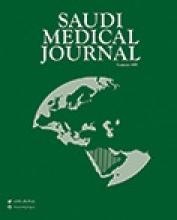Abstract
OBJECTIVE: To determine the prevalence of extended-spectrum beta-lactamase (ESBL) producing Klebsiella pneumoniae (K. pneumoniae) and Escherichia coli (E. coli), risk factors of ESBL-producing strains and antimicrobial susceptibility pattern of ESBL-producing and non producing strains.
METHODS: The study took place at the Faculty of Medicine, Osmangazi University, Eskisehir, Turkey from March to November 2002. We evaluated 100 K. pneumoniae and 100 E. coli strains isolated from various clinical specimens, as well as the patients from whom these strains were isolated. The double-disk synergy test was performed on the isolates for the detection of ESBL. We visited the patients with a growth of E. coli or K. pneumoniae or both from their clinical specimens in their wards if they were hospitalized, while the outpatients with a growth of these microorganisms were evaluated from their hospital records.
RESULTS: The prevalence of ESBL-producing K. pneumoniae was 47% and E. coli was found as 12%. The ESBL-producing isolate rates were 50% (14/28) in intensive care units, 36.1% (35/97) in wards and 13.3% (10/75) in outpatients. Foley catheter (p<0.001), intravenous catheter (p<0.001), central venous catheter (p=0.002), intubation (p<0.001), surgery (p<0.001) and mechanical ventilation (p=0.002) were found as the risk factors for the acquisition of E. coli and K. pneumoniae with ESBLs.
CONCLUSION: In our study, the prevalence of ESBL-producing isolates was high. The results of the study suggest that an antimicrobial policy and early removal of interventional apparatus be of importance for the control of ESBL-producing K. pneumoniae and E. coli.
- Copyright: © Saudi Medical Journal
This is an open-access article distributed under the terms of the Creative Commons Attribution-Noncommercial-Share Alike 3.0 Unported, which permits unrestricted use, distribution, and reproduction in any medium, provided the original work is properly cited.






